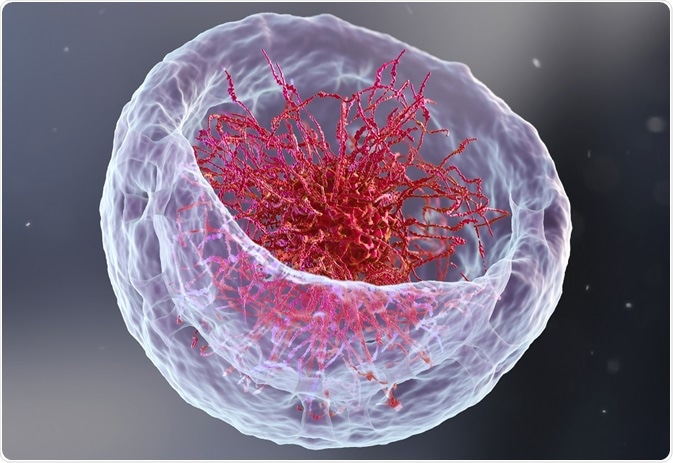Chromatin Immunoprecipitation Seqencing (ChIP-Seq) is a powerful tool that enables researchers to investigate and understand protein−DNA interactions and the influence these have on gene expression and cell function.
 Image Credit: YuriiHrb / Shutterstock
Image Credit: YuriiHrb / Shutterstock
ChIP-Seq analysis combines chromatin immunoprecipitation (ChIP) assays and next generation sequencing (Seq) to identify DNA binding sites for transcription factors and other proteins across the genome. The technique has offered researchers great insight into the gene regulation events that occur in both the health state and in various diseases.
Histones
Histones are small, simple proteins, usually occurring in the cell nucleus, that organize strands of DNA into nucleosomes. Any changes that occur in these nucleosomes are thought to be associated with alterations in the state and function of chromatin during cell division and transcription.
Histone modification
Histones undergo a wide range of post-translational modifications. These mainly occur in the amino-terminal tail of the histone, which extends from the nucleosome surface. At least two mechanisms are thought to explain how these modifications mediate the function of chromosomes.
The first is that the modifications alter a histone’s electrostatic charge, causing its structural change or altering how it binds to DNA. The second suggests that the modifications create sites that protein recognition modules can bind to. Histone modification provides an epigenetic mechanism that enables a range of essential healthy and disease-related processes to be regulated.
Epigenetic modifications are crucial factors in the regulation of gene expression and the function of the genome. Among the various types of epigenetic modifications, histone modification is of significant interest to researchers who want to understand the regulation of epigenetic and gene expression in different types of cells, cellular stages and cellular environments.
Histone post-translational modifications affect many chromatin-based reactions and those that influence gene expression are particularly important since they can affect entire transcription programs. Abnormalities in the metabolism of post-translational modifications have been associated with misregulation of gene expression in a number of in vitro studies.
They have also been correlated with human diseases, including cancer and immunodeficiency disorders. Therefore, the regulation of histone markers and the effect they have on the association of modification-specific binding proteins is an ongoing area of significant interest.
Establishing the role of histone modifications often involves analysing the abundance of the modification and the binding partners they interact with.
ChIP-Seq identification of histone modification
ChIP-Seq has become a robust, routine and comprehensive technique for investigating and measuring various post-translational histone modifications across the entire genome. These modifications, including methylation, acetylation, phosphorylation and ubiquitination, are all key to the function of the genome and the preservation of its integrity.
They contribute to the silencing of transposable elements and play a role in regulating certain genes during development. The incorrect placement of a modification can result in unhealthy cell phenotypes including those seen during the aging process, in cases of cancer and in response to challenging nutritional or environmental states.
A common approach in ChIP-Seq analysis is to obtain ChIP-Seq profiles for an experimental sample (disease sample) and a reference sample (healthy sample) and compare them to identify differences in the histone modification patterns. These can then be used to establish the genes or mechanisms of regulation that are involved in the various processes that occur in development or disease.
How to Optimize your Chromatin Fragmentation for ChIP
Further Reading